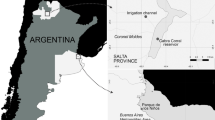Abstract
The parasitic fish nematode Camallanus cotti has been reported from a number of freshwater fish species around the world. Its wide geographical distribution seems mainly to be the result of anthropogenic dissemination due to extensive ornamental fish trade. In most reports it is assumed that C. cotti's life cycle involves cyclopoid copepods as intermediate host and various freshwater fishes as final host. However, the species' relatively frequent and persistent occurrence in aquaria worldwide strongly indicates flexibility in its life cycle, i.e. the ability to infect the final host directly. The present study has shown that under aquaria conditions, without any presence of copepods, C. cotti is able to infect various phylogenetically distant fish species directly for at least three generations. It was further shown that the infective free-living first-stage larvae may survive for more than three weeks in the host-external environment and that their host-attracting behaviour is not precluding direct transmission to the final fish host. Any treatment for C. cotti under aquaculture or aquarium conditions should be directed towards both individual infected fish hosts as well as the free-living larvae on the substrate.
Similar content being viewed by others
REFERENCES
Anderson, R.C. (2000) Nematode Parasites of Vertebrates: Their Development and Transmission 2nd edn. Wallingford: CAB International, 650 pp.
Campana-Rouget, Y., Petter, A.J., Kremer, M., Molet, B. and Miltgen, F. (1976) Présence du Nématode Camallanus fotedari dans le tube digestif de poissons d'aquarium de diverses provenances. Bulletin de l'Academie Véterinaire de France 49, 205–210.
Croll, N.A. and Matthews, B.E. (1973) Activity, aging and penetration of hookworm larvae. Parasitology 66, 279–289.
De, N.C. (1995) On the development and life cycle of Spirocamallanus mysti (Nematoda: Camallanidae). Folia Parasitologica 42, 135–142.
De, N.C. (1999) On the development and life cycle of Camallanus anabantis (Nematoda: Camallanidae), a parasite of the climbing perch, Anabas testudineus. Folia Parasitologica 46, 205–215.
De, N.C. and Maity, R.N. (1995) Redescription and development of a little known nematode Camallanus xenentodoni (Nematoda: Camallanidae), with a note on a related form. Folia Parasitologica 42, 211–219.
Evans, B.B. and Lester, R.J.G. (2001) Parasites of ornamental fish imported into Australia. Bulletin of the European Association of Fish Pathologists 21, 51–55.
Font, W.F. and Tate, D.C. (1994) Helminth parasites of native Hawaiian freshwater fishes: An example of extreme ecological isolation. Journal of Parasitology 80, 682–688.
Hoffman, G.L. and Schubert, G. (1984) Some parasites of exotic fishes. In Distribution, Biology, and Management of Exotic Fishes (W.R. Courtenay Jr. and J.R. Stauffer Jr., eds). Baltimore: The Johns Hopkins University Press, pp. 233–261.
Kennedy, C.E.J., Endler, J.A., Poynton, S.L. and McMinn, H. (1987) Parasite load predicts mate choice in guppies. Behavioral Ecology and Sociobiology 21, 291–295.
Li, S.Y. (1941) On two new species of nematodes from China. Peking Natural History Bulletin 15, 195–199.
McMinn, H. (1990) Effects of the nematode parasite Camallanus cotti on sexual and non-sexual behaviors in the guppy (Poecilia reticulata). American Zoologist 30, 245–249.
Moravec, F. (1994) Parasitic Nematodes of Freshwater Fishes of Europe. Dordrecht: Kluwer Academic Publishers: 473 pp.
Moravec, F. and Nagasawa, K. (1989) Observations on some nematodes parasitic in Japanese freshwater fishes. Folia Parasitologica 36, 127–141.
Moravec, F. and Sey, O. (1988) Nematodes of freshwater fishes from North Vietnam. Part 1. Camallanoidea and Habronematoidea. Vestnik Ceskoslovenske Spolecnosti Zoologicke 52, 128–148.
Moravec, F. and Vargas-Vásquez, J. (1996) The development of Procamallanus (Spirocamallanus) neocaballeroi (Nematoda: Camallanidae), a parasite of Astyanax fasciatus (Pisces) in Mexico. Folia Parasitologica 43, 61–70.
Moravec, F., Mendoza-Franco, E., Vargas-Vásquez, J. and Vivas-Rodríguez, C. (1995) Studies on the development of Procamallanus (Spirocamallanus) rebecae (Nematoda: Camallanidae), a parasite of cichlid fishes in Mexico. Folia Parasitologica 42, 281–292.
Raina, M.K. and Dhar, R.L. (1972) On Camallanus fotedari n.sp. (Nematoda: Spiruridea) from the intestine of Nemachilus kashmirensis in Kashmir, India. Journal of Helminthology 46, 157–160.
Rigby, M.C., Font, W.F. and Deardorff, T.L. (1997) Redescription of Camallanus cotti Fujita, 1927 (Nematoda: Camallanidae) from Hawaii. Journal of Parasitology 83, 1161–1164.
Schubert, G. (1972) A new fish enemy. Tropical Fish Hobbyist 21, 15–20.
Stromberg, P.C. and Crites, J.L. (1974a) Survival, activity and penetration of the first stage larvae of Camallanus oxycephalus Ward and Magath, 1916. International Journal for Parasitology 4, 417–421.
Stromberg, P.C. and Crites, J.L. (1974b) The life cycle and development of Camallanus oxycephalus Ward and Magath, 1916 (Nematoda: Camallanidae). Journal of Parasitology 60, 117–124.
Stumpp, M. (1975) Untersuchungen zur Morphologie und Biologie von Camallanus cotti (Fujita, 1927). Zeitschrift für Parasitenkunde 46, 277–290.
Tielens, A.G.M. (1994) Energy generation in parasitic helminths. Parasitology Today 10, 346–352.
Yamaguti, S. (1941) Studies on the helminth fauna of Japan. Part 33. Nematodes of fishes, II. Japanese Journal of Zoology 9, 343–396.
Author information
Authors and Affiliations
Rights and permissions
About this article
Cite this article
Levsen, A. Transmission Ecology and Larval Behaviour of Camallanus cotti (Nematoda, Camallanidae) Under Aquarium Conditions. Aquarium Sciences and Conservation 3, 301–311 (2001). https://doi.org/10.1023/A:1013137801600
Issue Date:
DOI: https://doi.org/10.1023/A:1013137801600




